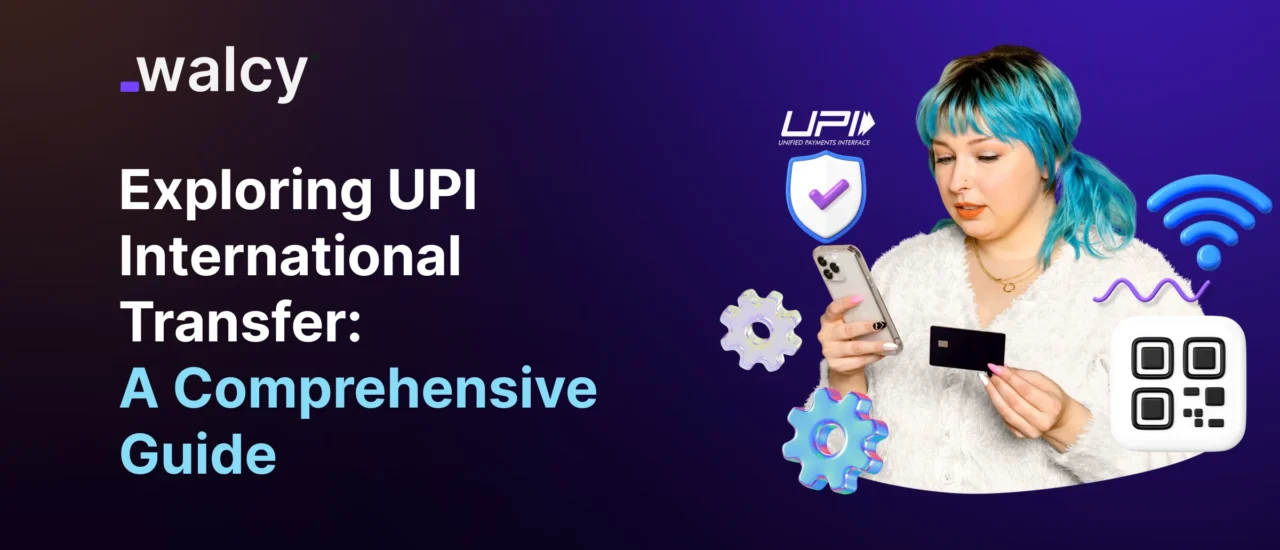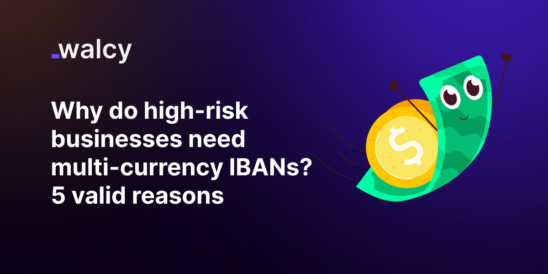It is a fact that digital payments in India have been reshaping their meaning, and UPI stands at the core. This money-transfer action will be defined by speed, security, and affordability. These days with UPI international transfer, users can send and receive money from any country in the globe, opening up more and more opportunities as a result of this transaction method’s excellent usability.
This blog article covers UPI international transfers in detail: transaction charges, security features, and the best banks offering this service. From sending money to any foreign land to receiving funds from a foreign country, everything that you need to know is here.
What is UPI International Transfer?
UPI international transfer is the facility to transfer funds from India or vice-versa any other country with much ease. UPI allows one to link multiple bank accounts to an app and facilitates easy payments with just one UPI ID or a single QR code. Originally, UPI was confined to domestic payments, but with the growing interest globally in India’s digital payment infrastructure, there has emerged international transfers through UPI.
UPI eliminates the requirement for wire transfers. Wire transfers involve a lot of time and charges when compared to cross-border payments. International UPI transfers will be very useful for NRIs, tourists, and businesses with international operations.
Read about: The Best Way To Receive International Payments In India
Salient Features of UPI International Transfer
Instant: Unlike wire transfers that take days to process, UPI does it in real-time to provide instant transfers of funds.
Low Charges: UPI charges for an international payment are competitive to make the option economically viable for cross-border transfers.
Currency Conversion: UPI-enabled cross-border payments give currency conversion automatically, proving to be a facility for users who do not like to deal with the constantly fluctuating exchange rate.
User-friendly: UPI is designed to be simple, with all transactions initiated via a UPI ID or QR code without the hassle of complicated account details.
Interoperability: These cross-border UPI transfers are enabled with multiple foreign banks and financial ecosystems to let the users transfer money across various currencies and platforms.
Read about: Best Multicurrency Account: What Is It And How It Works?
How to Transfer Money Abroad via UPI
Now, the process of using UPI internationally is rather easy. Here’s a step-by-step guide on how to make international payments via UPI:
Step 1: First, you will need a UPI-enabled application.
The options can be Google Pay, Phone Pay, or Paytm. These apps offer both domestic and international UPI services. Get the app from the Google Play Store or the Apple App Store if you don’t already have it.
Step 2: Set Up Your Account
Download and, after that, connect your bank account through the UPI interface. You require the details of your debit card for account verification. Some applications may ask for further verification, such as an OTP on your registered mobile number.
Step 3: Verify Bank Support for International Transfers
Not all banks support UPI for international transactions. The bank should be a participating bank. Some of the best banks for UPI transactions, especially internationally, are HDFC Bank, ICICI Bank, and SBI.
Step 4: Make the Transfer
Once your account is set up and connected, go to the section in the app called “International Transfer”. Fill in the recipient’s details with the bank account details or UPI ID, as per the country and the UPI services available in that country.
Step 5: Currency Conversion and Amount Entry
Specify how much you’d like to transfer. The application will let you know how much money, exactly, your recipient will receive in their currency, as well as any essential exchange rates and fees. Take a minute to review it before continuing with the process.
Step 6: Authorization and Completion
Recheck the transfer details and authorize the transaction thereafter. UPI transactions require a UPI PIN, sometimes biometric or any other higher security to authenticate the transaction. The fund would be transferred immediately or within minutes depending upon the processing time of the foreign system.
Read about:Understand The Mid-Market Exchange Rate | Deep Explanation.
UPI Transaction Charges
Probably the most impressive feature of UPI is its minimal transaction charges, which make it very cost-effective for domestic as well as international transfers. However, there is a possibility that UPI international payment charges may slightly differ from the domestic ones.
Domestic UPI Transaction Charges
Generally, most UPI transactions in India might be free or for a minimum charge, usually ₹ 0-₹ 5, depending on the bank type and amount of transaction. Additional services for UPI through apps like Google Pay and PhonePe are mostly free. Still, the banks sometimes do charge some minimal charges if the number of UPI payments exceeds threshold levels.
International UPI Payment Charges
For international payments, UPI remains fairly inexpensive relative to the more traditional kinds of wire transfers or third-party remittances. UPI international payment charges are variable between 0.5% to 1.5% of the transaction amount. The charge for this mostly revolves around the bank and the money amount to be transferred.
These charges, however, can be higher than domestic UPI transactions but way lower compared to the fees charged through international money transfer services like Western Union or PayPal.
Apart from this, international transfers also include currency conversion fees; these are typically packaged together in the overall cost of the transfer. These vary depending on the prevailing exchange rate. At the same time, some UPI applications may extend competitive exchange rates, which make it even cheaper to send money abroad.
Read about: International Payment Fees | The Essential guide.
How to Check UPI Reference Number (UPI Ref No)
You are issued a unique identifier, known as a UPI Reference No., for tracking and verification reasons with each successful UPI transaction. This is the number helpful in domestic and international transfers that warrants the status of the payments and debug issues.
How to Check UPI Ref No.
TRANSACTION HISTORY: Most UPI apps store your transaction history under the ‘Transaction History’ section. You can track every previous payment ever made, each with a UPI Ref No assigned to that particular transaction.
SMS BANK/EMAIL: If a transaction is successful, then banks send an SMS/e-mail confirmation along with the UPI Ref No. This serves as a kind of receipt and proof that this transaction has occurred.
Bank Statement: You may also look for the UPI reference number in your bank account statement. Each transaction of UPI will be reflected in your bank account statement with its reference number.
Customer Support: In case one is unable to access the reference number using the above-mentioned ways, one may get in touch with the customer support team of one’s respective bank or UPI app for assistance.
Are anonymous UPI Payments Possible?
The question that most users ask is whether UPI supports any anonymous kind of payment. The quick answer is a definite no. UPI does not support any anonymous transaction. In UPI, every payment traces back to the account holder and his or her UPI ID, meaning that in case of disputes or fraud, both parties can be traced.
Why UPI Does Not Allow Anonymous Payments:
UPI was designed in a way that was supposed to introduce transparency and security features in digital payment transactions. Each transaction is traceable back to the user to avoid misuse, money laundering, or other illegal activities. The UPI system is based on strict adherence to the rules of KYC, meaning both the sender’s and the receiver’s identities are verified.
While UPI does support truly anonymous transactions, it does maintain a high level of privacy through user data encryption and tokenization for securing payment details. Thus, though your identity may be linked to the transaction, sensitive financial information remains protected.
Best Banks for UPI International Transfers
Not all banks have UPI international transfer services. A complete UPI experience, more so in cross-border transactions, calls for the careful picking of a bank that provides seamless UPI international payment services. Here is a checklist of some top-performing banks for UPI transactions.
HDFC Bank: HDFC has been at the edge in terms of the digital banking space. It offers smooth, fast, and good UPI international transfers. Being the option with low fees, it represents the main choice for customers in search of appropriate UPI services, coupled with good infrastructure.
ICICI Bank: ICICI is one of those renowned banks that have been continuously bringing innovations in providing banking services. This includes complete UPI services. It offers competitive charges with efficient cross-border payment alternatives, thereby assisting customers in accomplishing international UPI transfers.
State Bank of India: Being the largest public-sector bank in India, SBI has given extensive access to UPI services, even for cross-border transfers. Because of its global reach, it is an appropriate option for customers who want to send money across borders.
Axis Bank: Axis Bank has also been at the forefront of providing digital banking. It provided full-fledged UPI services, including that of international payments. The intuitive app interface and competitive fees make it a solid option for international users of UPI.
UPI Debit Card Integration
While UPI is essentially tagged to bank accounts, one can also include debit cards in the UPI system as a result of expanding flexibility and control. This UPI integration of debit cards will enable one to make the payment directly from the debit card while using the UPI interface.
Linking Debit Card to UPI
- Launch your UPI Application: Go to the “Bank Account” section.
- Click on “Add Debit Card” and fill in all the details of the card.
- Verify the card using an OTP sent to your registered mobile number.
- Once verified, a payment option via debit card can be selected for a transaction in UPI.
This facility will be helpful for those who want to rely more on their debit cards rather than bank accounts or even those who intend to keep some particular limit on UPI transactions.
Conclusion
UPI international transfers epitomize a huge leap in the realm of digital financial transactions. Its ease of use, low fees associated with transactions, and instant payments make UPI head for the frontline in cross-border financial services globally. For a business owner, frequent traveler, or merely any person wanting to send money to another country, UPI provides an alternative whereby one can make international payments securely, reliably, and at a low cost.
It ranges from understanding the charges for UPI transactions and checking the UPI reference number to understanding how you can make the best choice of bank for UPI international transfers-literally, everything you need to know to avail maximum benefit from this ever-expanding system is covered here. As UPI expands its network, its users will keep getting better features and services for international payments, making it as seamless as for local ones.



